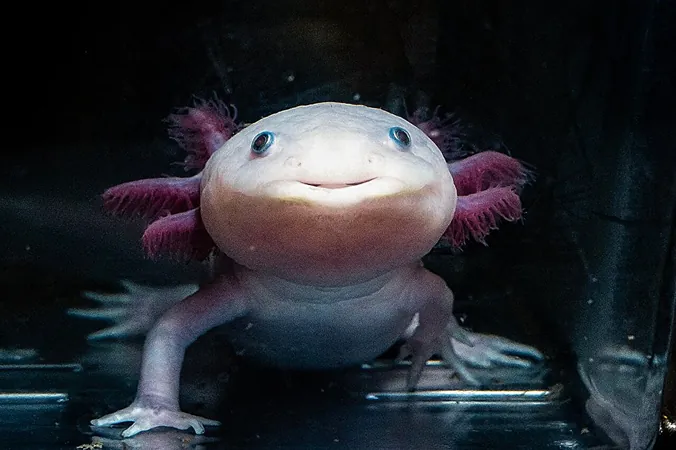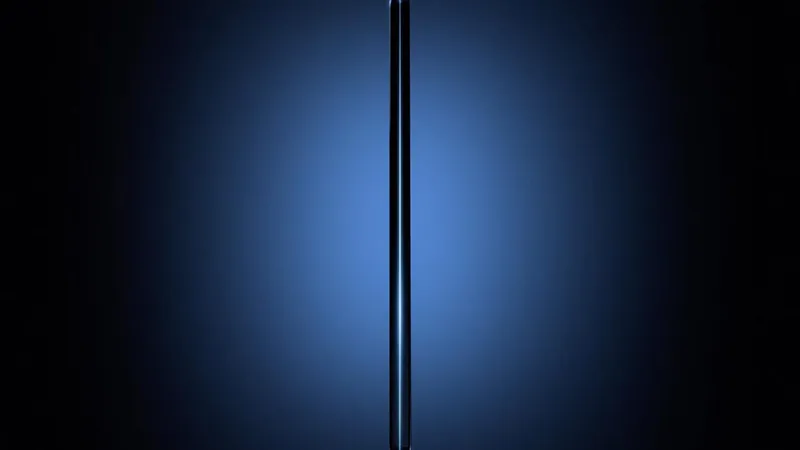
Unlocking the Axolotl's Regenerative Powers: A Step Towards Limb Regrowth in Humans
2025-06-10
Author: Charlotte
Meet the axolotl—the enchanting salamander that not only steals hearts with its adorable appearance and vibrant pink gills but also holds the potential key to regenerating human limbs. These creatures are not just a pretty face; they boast a jaw-dropping ability to regrow entire limbs and even organs.
The Quest for Regenerative Secrets
Enter James Monaghan, a leading biology professor at Northeastern University, who is diving headfirst into the fascinating world of axolotl regeneration. His research could pave the way for groundbreaking advancements in human regenerative medicine.
"Imagine healing wounds without scars or even regrowing an entire finger," Monaghan states confidently. "It's within the realm of possibility to envision regrowing something as complex as a hand!"
Solving the Mystery of Positional Memory
In a recent publication in Nature Communications, Monaghan tackles a question that has puzzled scientists for generations: How does an axolotl know precisely what to regenerate? If it loses a hand, why doesn’t it grow back an entire arm instead?
Monaghan has pinpointed the secret to this remarkable ability—positional memory—linked to a molecule called retinoic acid. This essential compound not only guides axolotls but is also found in humans, primarily sourced from our diet and skin treatments.
The Role of Retinoic Acid in Regeneration
His research shows that axolotls possess a unique gradient of retinoic acid signaling throughout their limbs. For instance, their shoulders have a higher concentration of this acid, enabling the regeneration of an entire limb, while the hands have less, signaling the growth of just a hand.
As Monaghan explains, "Cells can interpret this information to know if they're at the elbow, prompting the regrowth of a hand, or at the shoulder, facilitating limb formation."
Pushing the Boundaries of Regeneration
Once Monaghan grasped the critical role of retinoic acid, he embarked on experiments that he humorously describes as "pretty Frankensteiny." By introducing additional retinoic acid to an axolotl's hand, he astonishingly triggered the growth of a duplicate limb.
This understanding is a monumental leap towards one day applying these regenerative lessons to humans. While we share retinoic acid and fibroblasts with axolotls, our body’s cells don't respond to regenerative signals in the same harmonious way.
Transforming Human Healing
In humans, when an arm is injured, fibroblasts create collagen and a scar, whereas axolotl fibroblasts heed retinoic acid's call, regenerating a new skeletal structure entirely.
Monaghan asserts, "If we can teach our fibroblasts to listen to the right cues, they'll know how to build a limb, just like during development."
The Road Ahead: More Questions Than Answers
However, the path to human limb regeneration remains long and winding. Monaghan stresses that unraveling the genetic signals in axolotls is only part of the puzzle. The next challenge lies in deciphering how cells process these signals and what retinoic acid is targeting inside them.
Remarkably, he's discovered a key player: a gene known as shox. Increased signaling of retinoic acid activates shox, crucial for regeneration. By utilizing CRISPR-Cas9 gene editing to remove shox from axolotls, Monaghan observed that they could only manage to regrow shortened arms with standard-sized hands—similar to the outcomes seen in humans with shox mutations.
A New Era in Regenerative Medicine
As Monaghan concludes, to advance regenerative biology, understanding and manipulating positional memory is vital. "How do you guide a cell to regenerate exactly where you want it? Altering its positional memory is the key to unlocking this mystery," he asserts. With ongoing research, the dream of human limb regeneration might be closer than we ever imagined.









 Brasil (PT)
Brasil (PT)
 Canada (EN)
Canada (EN)
 Chile (ES)
Chile (ES)
 Česko (CS)
Česko (CS)
 대한민국 (KO)
대한민국 (KO)
 España (ES)
España (ES)
 France (FR)
France (FR)
 Hong Kong (EN)
Hong Kong (EN)
 Italia (IT)
Italia (IT)
 日本 (JA)
日本 (JA)
 Magyarország (HU)
Magyarország (HU)
 Norge (NO)
Norge (NO)
 Polska (PL)
Polska (PL)
 Schweiz (DE)
Schweiz (DE)
 Singapore (EN)
Singapore (EN)
 Sverige (SV)
Sverige (SV)
 Suomi (FI)
Suomi (FI)
 Türkiye (TR)
Türkiye (TR)
 الإمارات العربية المتحدة (AR)
الإمارات العربية المتحدة (AR)